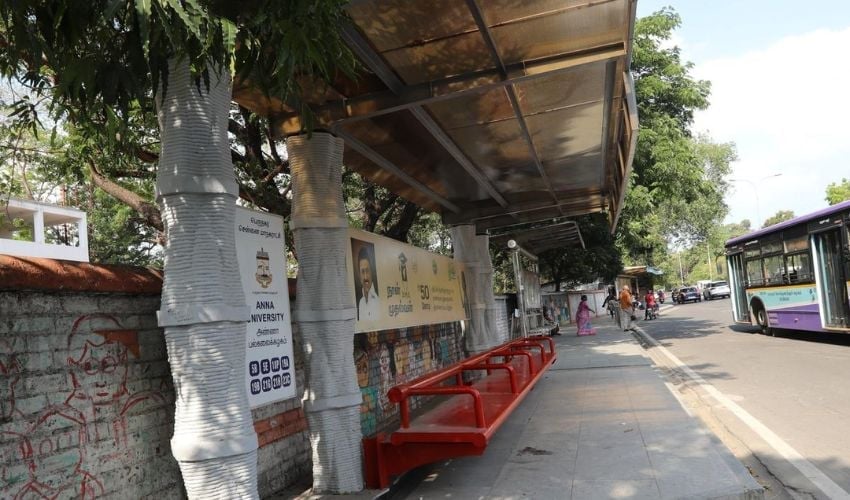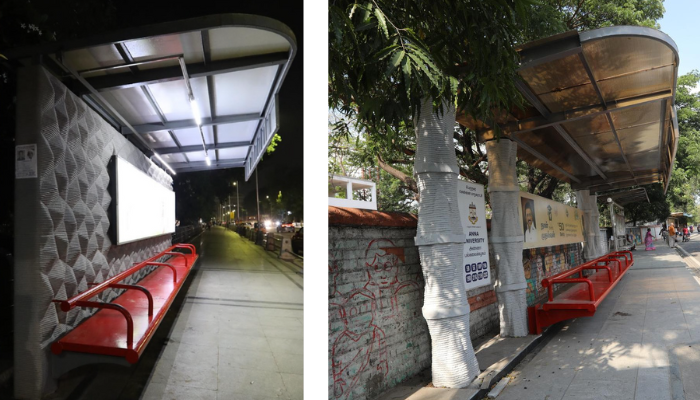Over 90 3D Printed Bus Shelters Installed in the Indian City of Chennai

The Indian city of Chennai currently has around 1,420 bus shelters. Many of them are in poor condition, and their usage is limited, if not abandoned. However, thanks to additive manufacturing, this is set to change! In the future, Chennai is expected to have nearly 90 3D-printed bus shelters. In the long term, 3D printing will give bus stops more functionality and “glamour.”
Collapsed roofs, seats that are too low or too high, and walls covered with posters should soon be a thing of the past for bus stops in Chennai. The Greater Chennai Corporation (GCC) has announced its intention to remedy these problems using 3D printing. Last September, the first 3D printed bus shelter was installed near Marina Beach. Others followed at the Anna University stop on Sardar Patel Road and opposite the TWAD building on Kamarajar Salai. But it doesn’t stop there. In the coming months, other bus stops will be renovated using 3D printing.

The first 3D printed bus shelter was installed in September 2024 near Marina Bay (left). Now, many other bus stops will gradually be upgraded using 3D printing, such as the Anna University bus stop (right) (Photo credit: unseenchennai on Instagram).
3D Printed Bus Shelters Combine Functionality and Aesthetics
The 3D printed bus shelters feature an innovative concrete structure created using 3D printing. There are also grooves on the reinforced concrete columns. This gives them an organic appearance, reminiscent of a tree trunk. Additionally, the surface texture makes it impossible to place poster advertisements, thereby preventing vandalism. The scarlet metal benches also provide a strong visual contrast to the gray columns. The new bus shelters are not only eye-catching, but they also stand out for their functionality, as the oversized benches are placed at an optimized height, which contributes to greater comfort. The GCC did not achieve this without obstacles, as the oversized benches were challenging to install due to the limited space.
Although the exact 3D printing method and printers used are not known, additive manufacturing offered numerous advantages to the GCC. This enabled both flexible and rapid construction of the new designs that improve both the functionality and aesthetics of public spaces. It is also unclear whether the GCC will retain the same design for the other planned bus shelters or whether it will experiment and fully exploit the potential of 3D printing. One thing is certain, however: the 3D printed bus shelters are sure to turn heads! For more information, click HERE.
What do you think of these 3D-printed bus shelters? Can additive manufacturing change our urban space? Let us know in a comment below or on our LinkedIn or Facebook pages! Plus, don’t forget to sign up for our free weekly Newsletter to get the latest 3D printing news straight to your inbox. You can also find all our videos on our YouTube channel. If you are interested in more 3D printing news in the automotive and transportation sector, visit our dedicated page HERE.
*Photo Credits: The Hindu / Prince Frederick







